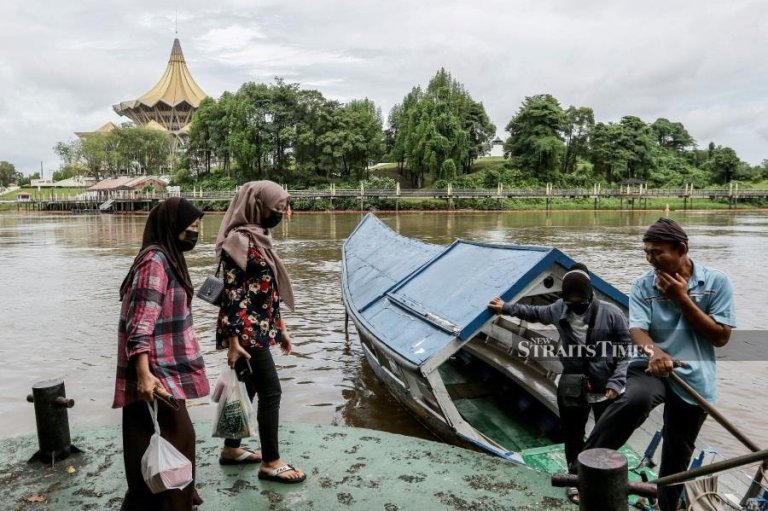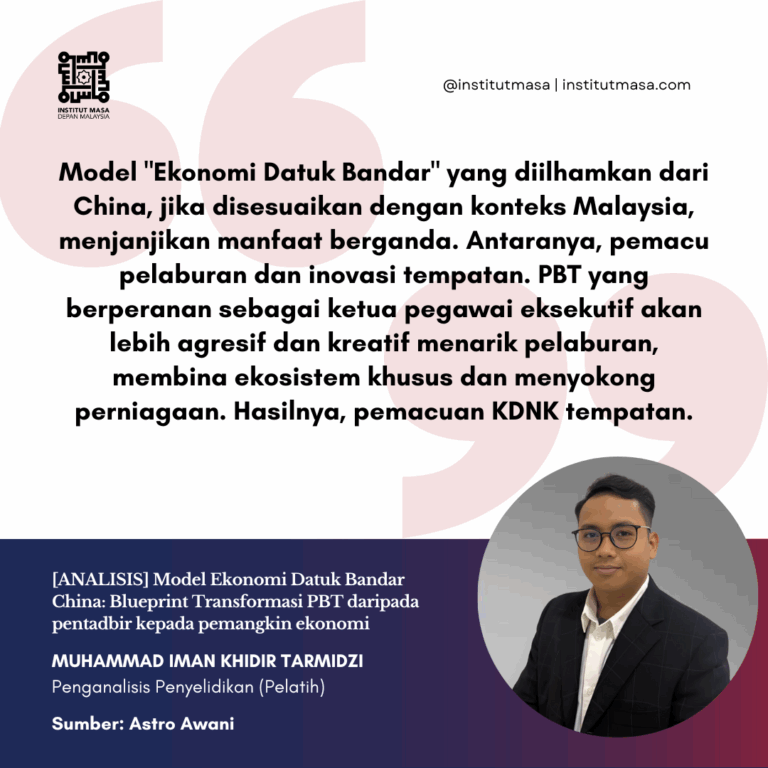By Mohammad Zulhafiy Zol Bahari, Research Analyst, Institut Masa Depan Malaysia
The Rukun Negara and Federal Constitution serve as the foundation and guiding principles of equity and justice that aspire to create citizens’ common and shared prosperity.
In this sense, how are Sabahans and Sarawakians doing?
Sabah and Sarawak are among top five contributors to the national gross domestic product (GDP), accounting for 6.7 per cent and 9.6 per cent respectively last year, behind Selangor.
However, the East Malaysia’s GDP growth is lower than the national growth (3.1 per cent), with Sabah GDP growth at 1.1 per cent and Sarawak’s at 2.9 per cent last year.
And many are still impoverished. According to the Department of Statistics Malaysia, poverty incidences show that Sabah and Sarawak were among the top three states with the highest poverty percentages of 25.3 per cent and 12.9 per cent respectively in 2020.
If the GDP growths are compared in the lens of regions between Peninsular and East Malaysia, the comparisons will be seen as biased as Sabah and Sarawak contribute a lot to GDP growth.
Equitability is the key focus that was promised and must be emphasised more but how far have we progressed on equitable rights since our independence?
Considering Malaysia’s New Economic Policy (NEP) which was implemented in 1971, equitable rights must first be achieved to ensure the social justice agenda in eradicating poverty-related issues can be carried out.
Among the key interventions under NEP’s poverty reduction strategy were public access to basic education, health services, infrastructure, wealth distribution and jobs creation, particularly in rural areas.
These strategies were aimed at enhancing inclusiveness among citizens to achieve equitable socioeconomic conditions.
The Shared Prosperity Vision 2030 (SPV2030) promoted the preservation for the rights of polarised groups, including the natives of Sabah and Sarawak.
Under this strategic plan, Sabahans and Sarawakians should have equitable access to high quality roads, basic infrastructure, health and quality education, especially for the rural communities.
In the 11th and 12th Malaysia Plans (11MP and 12MP), the principles of equitable opportunities were the central focus as the government aims to increase overall B40 household income towards improving the quality of life and wellbeing of the rakyat.
But, the impact of Covid-19 pandemic has exacerbated socioeconomic insecurity and devastation in the development sector in Sabah and Sarawak.
It further unveiled the long suffering facing our fellow Sabahans and Sarawakians, even in the aspect of having basic accessibility such as infrastructure, education, public healthcare, and clean and sufficient water supply.
The simplest way to reduce the gaps has been mentioned in Goal 4 of the United Nations Sustainable Development Goals — promote quality education and assist children from low-income households to break the cycle of poverty.
Inadequate access to education has always been a major barrier to people in Sabah and Sarawak. Several rural areas in these two states still lack education facilities, hence, low education quality.
In the spirit of celebrating the 59th Hari Merdeka, the socioeconomic democracy, such as democratisation of education, must be upheld to allow Sabahans and Sarawakians to gain equitable access to education so that they can improve their lives and produce more skills beneficial for employment and their future career.
The National Recovery Council did highlight this, stressing the importance of ensuring all schoolchildren to have access to education.
Under the 12MP, Sabah and Sarawak each received between 15 per cent and 18 per cent of the total basic development allocation annually.
The question is how can these allocations actually address the real needs of the people in the two states? What mechanism can be used to ensure there is transparency?
Equal development policies can no longer be adopted. On the other hand, policies that are impartially equity-based on the needs and rights of the local community should be highlighted.
The government needs to be more proactive in tackling socioeconomic barriers like youth unemployment and helping the people of Sabah and Sarawak enjoy a higher quality and sustainable standard of living.
Achieving a balance in regional development will continue to be the main priority in Sabah and Sarawak to address the lack of infrastructure, such as utilities, telecommunications and the slow progress of public transportation.
These shortfalls must be addressed because they have the potential to deter foreign investors from coming to Sabah and Sarawak.
Source:https://www.nst.com.my/opinion/columnists/2022/09/833279/seeking-balanced-development-sabah-sarawak
Image: https://assets.nst.com.my/images/articles/swks_1663776009.jpg




